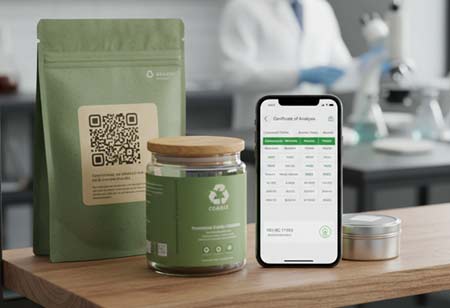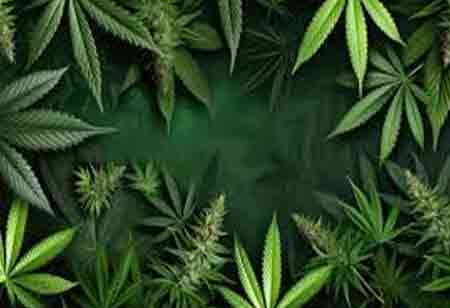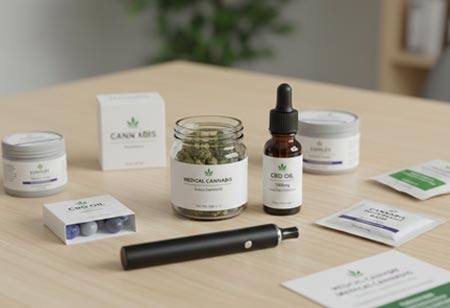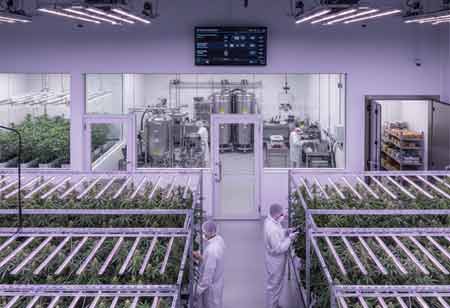Thank you for Subscribing to Cannabis Business Insights Weekly Brief
The Professionalization of Cannabis Through Testing and Packaging
The cannabis industry relies on rigorous lab testing and compliant packaging to ensure product safety, transparency, and consumer trust, marking its evolution from illicit origins to a professional market.

By
Cannabis Business Insights | Wednesday, October 08, 2025
Stay ahead of the industry with exclusive feature stories on the top companies, expert insights and the latest news delivered straight to your inbox. Subscribe today.
Fremont, CA: The journey of cannabis from cultivation to consumption, often called "seed to shelf," is a complex chain where quality assurance is paramount. As the industry matures, two elements have emerged as the dual pillars of consumer trust and product safety: rigorous laboratory testing and compliant, innovative packaging. These two disciplines, at their intersection, are redefining brand credibility and ensuring the health and well-being of cannabis consumers.
The Cornerstone of Safety: Accredited Laboratory Testing
Before any cannabis product can be packaged and made available to consumers, it must first undergo a crucial stage: independent, third-party laboratory testing. This process serves as the industry’s primary safeguard against harmful contaminants, ensuring the accuracy of all product information and forming the foundation of consumer safety and trust.
Accredited laboratories operating under internationally recognized standards, such as ISO/IEC 17025, conduct comprehensive analyses to verify potency, purity, and transparency. Potency and consistency testing involves detailed cannabinoid profiling to quantify the levels of key compounds, including THC, CBD, and minor cannabinoids. Accurate dosing is particularly vital for medical users, and such testing ensures that product labels reflect accurate composition, providing consumers with reliable and consistent experiences.
Purity assessments, meanwhile, address the inherent bio-accumulative nature of the cannabis plant, which readily absorbs substances from its growing environment. Labs therefore screen for a wide range of potential contaminants, including pesticide residues, heavy metals such as lead, arsenic, and mercury, microbial impurities like E. coli and Salmonella, as well as mold and yeast, as well as residual solvents that may remain from extraction processes—especially in concentrates. In addition, many laboratories perform terpene profiling to identify aromatic compounds that influence a product’s flavor, aroma, and potential therapeutic benefits, enhancing the overall product profile.
The culmination of this meticulous testing is the Certificate of Analysis (COA), a document that details all findings and verifies compliance with safety and quality standards. By providing easy access to the COA—often through QR codes on product packaging—brands promote transparency, empower consumers to make informed purchasing decisions, and reinforce credibility in an increasingly regulated market.
The Dual Role of Packaging: Protection and Compliance
Once a cannabis product has been certified for quality and safety through laboratory testing, its packaging assumes a crucial role in maintaining those standards while ensuring regulatory compliance and effective brand communication. Modern cannabis packaging is designed to meet stringent state-mandated safety requirements, featuring child-resistant and tamper-evident mechanisms to prevent accidental access and reassure consumers of product integrity. Precise and accurate labeling further reinforces transparency, displaying lab-verified information such as THC and CBD content, ingredient lists, allergens, packaging dates, and mandatory health warnings. To protect minors, packaging must also avoid visually appealing designs such as bright colors or cartoon imagery. Beyond communication, packaging materials themselves safeguard product quality by preventing contamination, moisture, and UV exposure, thereby maintaining the potency and freshness of the product.
Driven by both regulation and environmental responsibility, the cannabis industry is embracing sustainable and innovative packaging solutions. Brands are increasingly adopting eco-friendly materials, such as compostable pouches, recyclable containers, and biodegradable options derived from hemp, to minimize their environmental impact. Concurrently, innovative technologies such as QR codes and NFC tags are being integrated into packaging, providing consumers with instant access to Certificates of Analysis (COAs), product information, and brand stories. This convergence of compliance, sustainability, and digital innovation underscores how modern cannabis packaging serves as a strategic tool for ensuring safety, transparency, and fostering consumer engagement.
The connection between accredited lab services and innovative packaging is synergistic. Lab testing defines the intrinsic quality (what's inside the product), and packaging preserves that quality while communicating the verified information and adhering to extrinsic standards (safety and regulatory compliance).
By mandating accredited lab testing, states ensure products are safe and accurately labeled. By enforcing strict packaging laws, they guarantee that this information is clearly presented and that the product is secured from children and tampering.
For a consumer, a high-quality cannabis product offers a consistent experience, is free from harmful contaminants, and comes with a clear, verifiable label. By prioritizing both ISO-accredited testing and compliant, sustainable packaging, the cannabis industry moves decisively away from its illicit-market origins. It embraces its future as a trusted, accountable, and professional sector of consumer goods.






